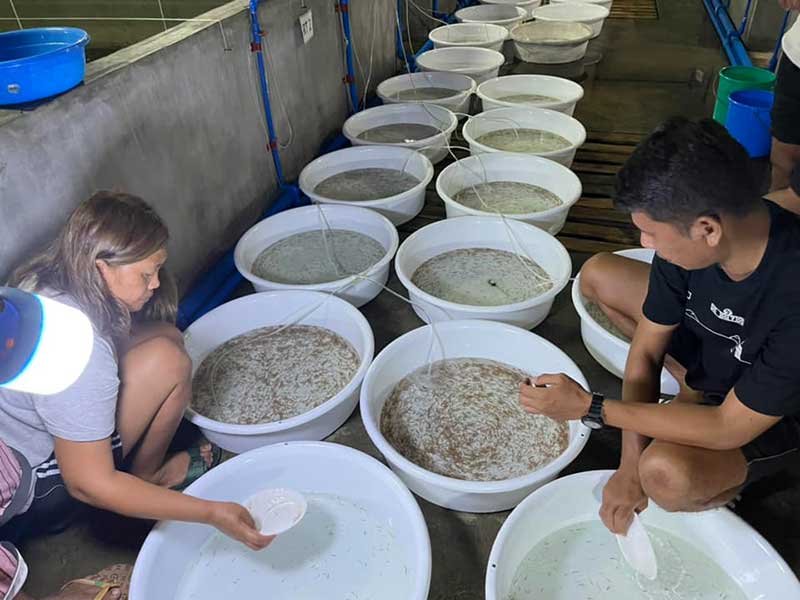By Nyra Armada
Aklan’s thriving fisheries sector received a major boost with the establishment of the Multi-species Marine Fish Nursery in Barangay Baybay, Makato, Aklan, as the local government stepped up efforts to improve the province’s aquaculture production.
This P4-million-worth nursery, equipped with technology and supplies from the Southeast Asian Fisheries Development Center Aquaculture Department (SEAFDEC/AQD), was developed to promote high-value finfish farming, meet the province’s demand for fingerlings and increase supply.
Local officials envision that with help from the facility, the first of its kind to be funded and operated by a provincial government in the country, Akeanon fisherfolks will no longer have to search for sources of fish seedlings outside Aklan and minimize mortality caused by logistics problems.
“This project will most benefit our Akeanon fish farmers in need of quality marine high-value finfish fingerlings,” according to Christian Deza, chief of the Office of the Provincial Agriculturist of Aklan (OPA-Aklan) Fisheries Division.
“With the increasing demand on milkfish fry, we are initially focusing on milkfish larval rearing, and soon siganid, grouper, seabass and pompano,” Deza added.
The facility will also cater to the needs of raw materials for post-harvest fisheries production, producing value-added fishery products to be promoted in the local market and across the province and supporting Aklan’s rapidly growing population and economic tourism.
‘Very good’ performance
In July, the nursery obtained 900,000 newly hatched milkfish larvae from SEAFDEC/AQD in Iloilo. The facility harvested 395,000 30-day-old fry from that batch in August, which were then stocked in ponds.
“We are very pleased that Aklan’s new nursery achieved a 43.9 percent survival rate on the first batch of milkfish larvae that we sold to them last July,” commented SEAFDEC/AQD Chief Dan Baliao in an interview. He added that the performance is “very good compared to the standard 30 percent survival from larvae to fry.”
When fully operational, Deza forecasted that the facility is expected to produce 600,000 milkfish fry per month and generate a net annual income of P1,200,000.
Deza added that SEAFDEC/AQD was one of the driving factors behind the establishment of the nursery as the concept arose from a series of lectures given by the research center a few years ago.
“It was conceptualized after SEAFDEC/AQD conducted information dissemination campaigns in the province,” acting provincial agriculturist Salome David stated during the blessing and launching of the facility on 18 August.
Following conceptualization, OPA-Aklan and their Sangguniang Panlalawigan visited the research institution’s facilities in 2016 for benchmarking.
Meanwhile, David expressed gratitude to SEAFDEC/AQD for providing personnel training, larvae, larval food, and technology for the facility’s operation.
Deza and two other colleagues enrolled in a specialized training course on marine fish hatchery operations at SEAFDEC/AQD’s Tigbauan Main Station in March of this year. The 12-day course equipped them on broodstock management, hatchery operations, and marine fish nursery culture.
The nursery is located on a 3,500 square meter property and has larval rearing tanks, natural food production tanks, rotifer production tanks, a filtration system in the water reservoir, a water pump and powerhouse, electrical installations, an office, and storage. The SEAFDEC/AQD standard protocol for operating and managing hatcheries is followed.
Inside the larval rearing tanks of the Multi-species Marine Fish Nursery in Barangay Baybay, Makato, Aklan. (Photo by OPA-Aklan)
The first batch of milkfish fry being harvested at the Multi-species Marine Fish Nursery in Barangay Baybay, Makato, Aklan in August 2022. (Photo by OPA-Aklan)




















